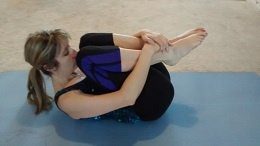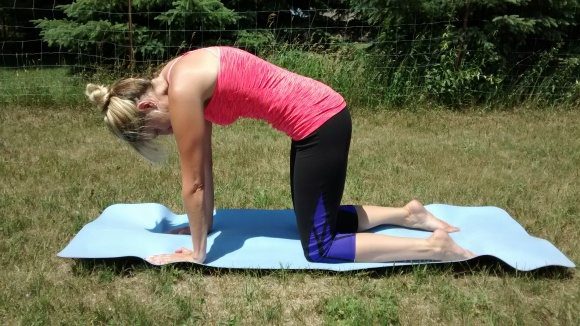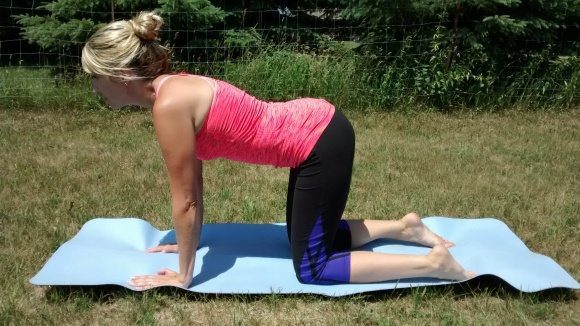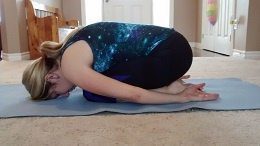Athletes
Sports Spine Specialist Chiropractic Team: Athletes strive to achieve their body’s maximum performance by participating in numerous training regimens consisting of strenuous exercises and physical activity and ensuring they meet all of their body’s nutritional requirements. Through proper fitness and nutrition, many individuals can condition themselves to excel in their specific sport. Our training programs are designed for athletes that look to gain a competitive edge in their sport.
We provide sport-specific services to help increase an athlete’s performance through mobility, strength, and endurance. Occasionally, however, the excess workouts can lead many to suffer injuries or develop underlying conditions. Dr. Alex Jimenez’s chronicle of articles for athletes displays in detail the many forms of complications affecting these professionals while focusing on the possible solutions and treatments to follow to achieve overall well-being.

by Dr Alex Jimenez DC, APRN, FNP-BC, CFMP, IFMCP | Diets, Fitness
The need to take a daily run might be something that spreads person-to-person, new research shows.
How much people run can depend to a certain extent on their responses to other people’s running, according to the findings from the analysis of social network data worldwide, The New York Times reported.
The results of the study in the journal Nature Communications also suggest that if you want to improve your running performance, it might be a good idea to become virtual friends with people who are a bit slower.
The researchers concluded that “running can be socially contagious,” said study leader Sinan Aral, professor of management, MIT, The Times reported.
“In general, if you run more, it is likely that you can cause your friends to run more,” Aral said.

by Dr Alex Jimenez DC, APRN, FNP-BC, CFMP, IFMCP | Diets, Fitness
For many people, eating healthy means eating organic whenever possible. But choosing only organic foods can take effort and be costly. So when does it make the most sense?
Experts from the University of Texas suggest feeding young children organic foods whenever possible to limit their exposure to pesticides. Adults should make their primary goal to eat healthy in general. In other words, make sure you’re getting enough fruits and vegetables in your diet before worrying about whether they’re organic.
Next, add in organic foods as your budget allows. Some organic fruits and vegetables are only slightly more expensive than non-organic varieties, so focus on them before the more expensive ones. You might also look for foods on which organic has the most impact. Generally, produce that you peel before eating will have less pesticide residue so it makes more sense to spend money on organic cherries than on organic bananas.
However, aside from limiting your exposure to pesticides, there’s little conclusive evidence that organic foods are healthier.
But there are other reasons — from taste to the idea of putting fewer chemicals in the soil — that might influence you to go organic. In the end, it’s often a very personal decision.

by Dr Alex Jimenez DC, APRN, FNP-BC, CFMP, IFMCP | Diets, Fitness
People who cycle to work have a substantially lower risk of developing cancer or heart disease or dying prematurely, and governments should do all they can to encourage more active commuting, scientists said on Thursday.
In a study published in the BMJ British medical journal, the researchers found that cycling to work was linked to the most significant health benefits – including a 45 percent lower risk of developing cancer and a 46 percent lower risk of heart disease compared to non-active commuters.
Walking to work was linked to a 27 percent lower risk of developing heart disease and a 36 percent lower risk of dying from it, though it also appeared to have no effect on cancer risk or overall premature death risk, the study showed.
The research involved 264,377 people with an average age of 53 whose data forms part of the UK Biobank – a database of biological information from half a million British adults.
Since the study was observational, no firm conclusions can be drawn about cause and effect, the researchers said. Its findings could also be affected by some confounding factors, they added, including that the mode and distance of commuting was self-reported, rather than objectively measured.
However, “the findings, if causal, suggest population health may be improved by policies that increase active commuting, particularly cycling”, they said.
These would include creating more cycle lanes, introducing more bike buying or hiring schemes, and providing better access for cyclists on public transport.
Lars Bo Andersen, a professor at the Western Norwegian University of Applied Sciences, who was not directly involved in the research but wrote a commentary on it in the BMJ, said its findings “are a clear call for political action on active commuting”, saying this had the potential to significantly improve public health by reducing rates of chronic disease.
“A shift from cars to more active modes of travel will also decrease traffic in congested city centers and help reduce air pollution, with further benefits for health,” he said.

by Dr Alex Jimenez DC, APRN, FNP-BC, CFMP, IFMCP | 915 Crossfit WOD Rss, Crossfit (Local)
Warmup:
200m Run
Grap someone and do switching
5 Burpees
10 Pushups
15 Squats
for 7min
Strength:
Stop Back Lift (2sec)
Discover H2
Subsequently Normal Back 2&occasions;3 @ same H2 fat
MetCon
40-30-20-10
1 Supply Switching DB Sn (50/35)(40/30)(35/25)
10-20-30-40
DB Cup Squats (same dumbbell)
5 Burpees between ea change (40 total)
*May alternative KB within this exercise
Additional Power
1) Banded Horizontal Hikes- 3x25m (each side)
2) Single-Leg KB Deadlifts- 3�12 (each leg)
3) Hip Extensions- 3&occasions;12 (biggest)�

by Dr Alex Jimenez DC, APRN, FNP-BC, CFMP, IFMCP | 915 Crossfit WOD Rss, Crossfit (Local)
Femmefit Thursday April 20 2017 – Crossfit 915Crossfit 915
Femmefit Thursday April 20 2017
0 remark
Check: 500m ro
WOD
in 20 minutes
Total
6-9 12 15-18 21
Package gets
Fat strip
in outstanding period
MAX basketball slams

by Dr Alex Jimenez DC, APRN, FNP-BC, CFMP, IFMCP | Athletes, Chiropractic, Fitness, Sports Injuries
El Paso, TX. Chiropractor Dr. Alex Jimenez discusses student-athletes and injuries.
Most injuries to student-athletes occur during routine practices, but only about a third of public high schools have a full-time trainer, according to the U.S.-based National Athletic Trainers’ Association (NATA).
“It’s important to have the right sports safety protocols in place to ensure the health and welfare of student athletes,” said Larry Cooper, chairman of NATA’s secondary school committee. “By properly preparing for practices and competitions, young athletes can excel on the field and stay off the sidelines with potential injuries.”

As Spring Season Approaches NATA Recommends Parents & Students Review Their Schools Policies On Sports Injuries
Here’s what to consider:
- Who handles sports-related injuries? Know who will care for athletes who are hurt during practice. Consider that person’s experience and credentials, including first aid and medical training. Determine who makes medical decisions. Coaches and athletes may not make objective decisions about injuries and safety if they are concerned about winning.
- What’s the emergency action plan? Every team should have a written plan detailing what to do if a serious injury occurs. An athletic trainer or first responder should review this plan.
- Is all equipment in good working condition? Sports equipment such as field goals, turf, basketball flooring and gymnastics apparatus should be examined to make sure it’s safe. Medical equipment such as splints and spine boards should be checked routinely. Schools should have an automated external defibrillator (AED) and staff trained in its use.
- Are high school coaches qualified? All coaches, assistant coaches and team volunteers should undergo a background check. They should have knowledge in the sport they are coaching and all credentials required by the state and athletic conference or league. Coaches should be trained to administer CPR, use an AED and provide first aid.
- Are locker rooms and gyms sanitary? These areas should be cleaned routinely to prevent the spread of bacterial, viral and fungal skin infections. Athletes should never share towels, athletic gear, water bottles, razors and hair clippers.
NATA says parents should also help ensure their teens are both mentally and physically prepared to play sports. This includes a preseason physical to identify any health conditions that could limit their participation. Young athletes shouldn’t be pushed or forced to participate. Parents should make sure their child’s school, coaches and other staff have a copy of his or her medical history as well as a completed emergency medical authorization form.
NATA recommends parents, student-athletes and coaches keep these safety tips in mind when spring training begins:
- Acclimate gradually. Athletes playing in hot weather should build up their endurance over one to two weeks. During this time, they should stay well hydrated and adjust their exercises according to weather. Athletes who must wear heavy protective equipment should gradually get used to playing in their gear. For example: wear only helmets on days one and two; then helmets and shoulder pads on days three and four, then full gear by day five.
- Be aware of concussions. Student-athletes, coaches and school medical staff must be well educated on concussion prevention and management. Students with head injuries should speak up if they experience symptoms such as dizziness, loss of memory, lightheadedness, fatigue or trouble with balance.
- Screen for sickle cell. All newborns are tested for this inherited trait that can lead to blockage of blood vessels during intense exertion. Athletes with sickle cell trait should take precautions. Warning signs include fatigue or shortness of breath.
- Allow for recovery time. The body needs to rest between seasons. Incorporating recovery time into the year can help prevent injuries. Repetitive motions can put excessive stress on joints, muscles or ligaments, resulting in injuries from overuse.
“It’s critical that all members of a school’s sports medicine team (athletic trainers, physicians and school nurses) work together to help prevent, manage and treat injuries or illnesses should one occur,” Cooper said in a NATA news release. “With a team approach we can reduce acute, chronic or catastrophic injury and ensure a successful season all around.”
News stories are written and provided by HealthDay and do not reflect federal policy, the views of MedlinePlus, the National Library of Medicine, the National Institutes of Health, or the U.S. Department of Health and Human Services.

Call Today!

by Dr Alex Jimenez DC, APRN, FNP-BC, CFMP, IFMCP | Lower Back Pain, Mobility & Flexibility, Spine Care
El Paso, TX. Chiropractor Dr. Alex Jimenez looks at yoga for back pain.
Yoga increases strength and flexibility, but some find it to be a spiritual experience that brings serenity and delight.
I attended my first yoga class after I was 21 years old. At the time the goal was purely to appease my self so that I really could tell my family, buddies and coworkers that “I do yoga”. In my experience, yogis were “cool” and I enjoyed being linked with that healthy lifestyle. My twenty-something year old mind was in a self absorbed place and that I totally enjoyed the freedom of dedicating myself to yoga and other enjoyable ways to fill my time.
Yoga in its purest form is intended to help the individual’s head and body and is likely to be practiced without ego.
My First Yoga Course
I loved her gentle encouragement. As I visited my weekly yoga classes, bending and twisting and telling myself “I can perform this,” I began to reap the benefits. I was sleeping better. My body felt less angry and I noticed a calmness come over me. I felt more patient coping with the irritations of life, too.
Here is The�Irony
Yoga is not something you do. It’s a thing that you encounter. Because over time, it gets engrained in you it’s called a practice. The teachings of Maureen were put in me like little seeds which didn’t actually completely thrive until much later in my life. To jogging, though I did not intentionally give up my usual yoga practice, around along the way it took a back seat. Those little seeds were there but lay dormant for now.
Running Was Different
I felt free moving swiftly across the road. Being goal oriented, I found monitoring my mileage to be a pleasing achievement. Running was pleasing for another reason, too. My best friend Linda was also a runner, and we’d meet most Sundays for long runs. We’d participated in occasional half marathons and put in 15 to 20 miles each week. Running that distance took time � two hours or even more.
Those small seeds were there all along. Like I mentioned, yoga has a way of becoming engrained in you.
My Back Pain & Yoga
If you’ve been following my site, you understand that I’ve had back pain through most of my entire life. Then, seemingly out of nowhere, my little friend “yoga” softly arrived back on the scene. My pain riddled body seemed to intuitively understand it needed yoga again. I began feeling the requirement to roll over on my back and pull my legs towards my chest, before getting out of bed in the early hours. (The knees-to-chest pose extends your lower back muscles and is a gentle, soothing approach to begin your day.) The reach that was straightforward felt energizing and really good.
There are quite a lot of advantages of yoga, especially for maintaining well-being and managing low back pain. A follow up experiment was conducted after 26 weeks, and those same yoga participants were experiencing increased function and less pain. For me, the continual practice of yoga has relieved my pain to the point that I no more need pain medication to get me.
Other Ways�Yoga Relieves Back Pain
- Yoga strengthens abdominal muscles both of which help support the spinal column and builds flexibility in the rear, when practiced regularly.
- Holding yoga models, for up to a minute, helps stretch the muscles over time.
- Properly stretching�the muscles in the low back reduces stress over the area.
- Yoga offers relief from pain, stress and anxiety. All low back pain suffers know this is a vicious cycle. You start with pain that doesn’t go away. You find out there is an anatomical reason for the pain. But, you still have the anxiety, and stress of worrying about how long this may last. Yoga can counter that triple threat.
- Yoga improves posture. To maintain a strong, fit, flexible backbone great posture is vital. Seated and standing yoga poses help improve the alignment of the spine and also posture. Proper bearing reduces back pain and removes some of the pressure from your spinal column.
Yoga For Beginners
Thus, let’s get started with a couple of poses which are a cinch to do and great for preserving flexibility in your spine.Try these three poses daily for increased flexibility and your spine will thank you!
Knees to Chest Pose (Picture below)
- Lie on your back with legs and arms stretched
- Bring both knees to chest as you exhale. Clasp your hands around legs
- Back is flat on the floor (mat)
- If it’s comfortable for you, gently rock back and forth, which gives you a little massage

Cat/Cow Pose (Images below)
- Begin on all fours in a tabletop�position
- Place your hands under your shoulders along with your knees under your hips
- Like a cat, round your back up to arch on the exhale
- Bring your chin to chest
- On the inhale, drop your abdomen and raise your head, extending your sitting bones (sits) back up

Cat Pose

Cow Pose
Child’s�Pose (Picture below)
- Move from table top to a kneeling position. Rest your arms by your side, press your shoulders down and simultaneously reach your head tall
- Slowly lower�your buttocks towards your heels feeling a nice stretch in your lower back/hips.
- Let your forehead�rest on the floor
- Place arms resting alongside your body
- Or you can place�arms above head, gently stretching as they are placed on the floor
- If it is easier too, you can widen knees as you stretch out

Those small yoga seeds�put by my first teacher long past � have continued to grow/flourish. I’m a fully certified yoga teacher and revel in sharing my practice with students every week now. May you find peace on your own journey and pain relief too, one pose at a time. Namaste.

Call Today!

















